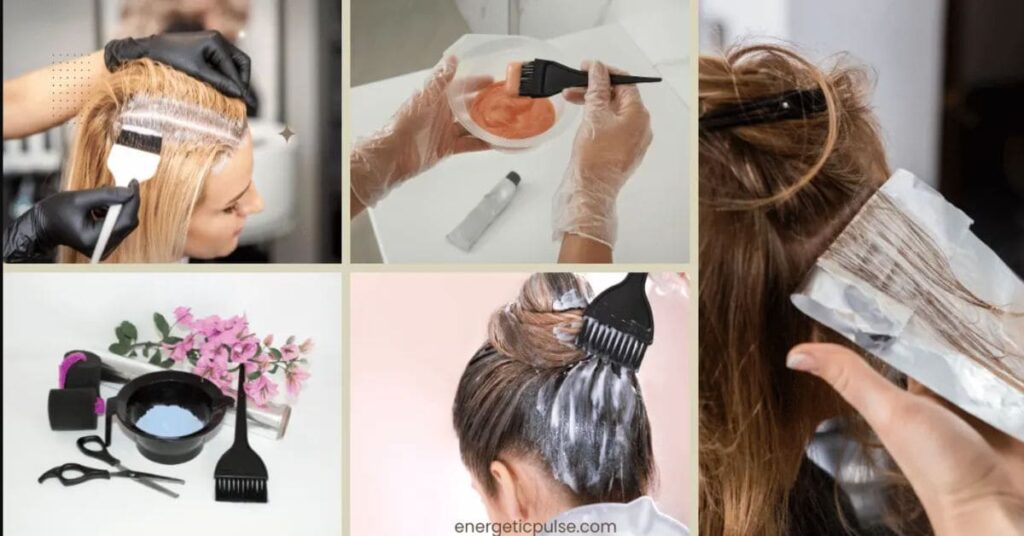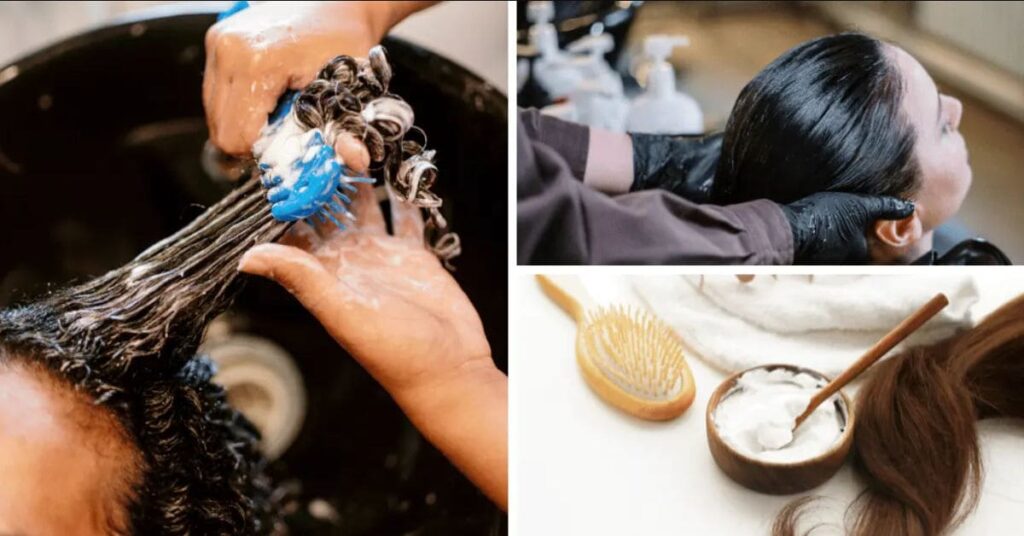No hair color is entirely devoid of potential damage, as the process of coloring hair typically involves some level of chemical treatment that can weaken or dry out the hair strands. However, there are certain options and techniques that can help minimize damage:
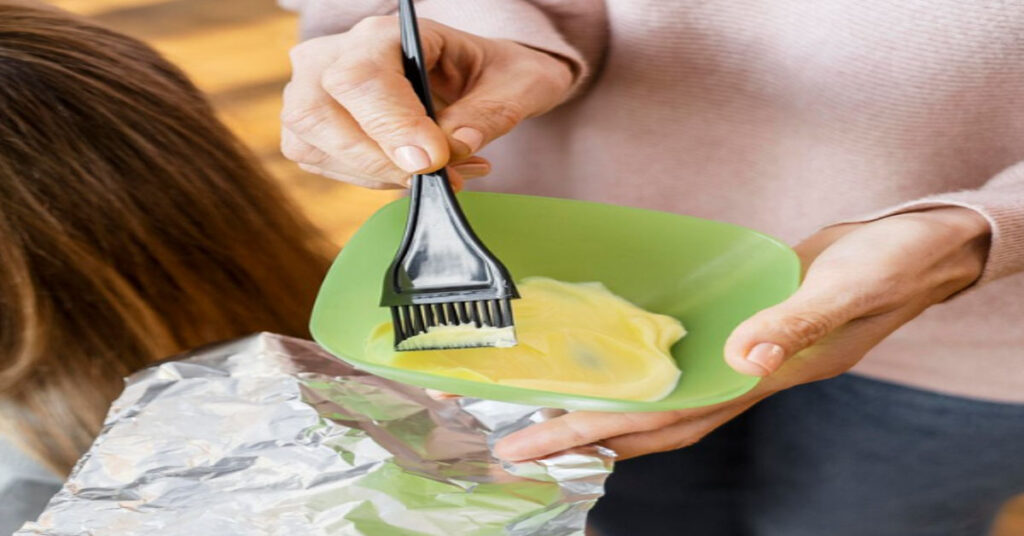
Ammonia-Free Hair Color
Ammonia-free hair color products have gained popularity in recent years due to concerns about the potential damage caused by ammonia-based dyes. what ammonia-free hair color entails and its potential benefits:
1. What is Ammonia?
Ammonia is a strong alkaline chemical compound commonly used in hair color formulations to open the hair cuticle and allow the dye to penetrate the hair shaft. It helps the dye molecules enter the cortex of the hair, where they can interact with the natural melanin and change the hair color.
2. Ammonia-Free Formulations:
Ammonia-free hair color formulations use alternative ingredients to achieve similar results without using ammonia. These alternatives often include other alkaline substances, such as ethanolamine or monoethanolamine, which perform a similar function of lifting the hair cuticle but are considered milder and less harsh on the hair.
3. Benefits of Ammonia-Free Hair Color:
- Reduced Scalp Irritation: Ammonia-free formulas are generally gentler on the scalp, making them a more comfortable option for people with sensitive skin or those prone to scalp irritation.
- Less Strong Odor: Ammonia is known for its strong, pungent odor, which can be unpleasant for many people. Ammonia-free hair color products often have a milder scent or are formulated with fragrance to mask any odors.
- Potentially Less Damage: While no hair color is entirely without risk, ammonia-free formulas are often perceived as less damaging because they are gentler on the hair shaft and less likely to cause excessive dryness or breakage.
- Suitable for Fragile or Chemically Treated Hair: People with fragile or chemically treated hair may benefit from using ammonia-free hair color, as it may help minimize further damage and maintain the health and integrity of the hair.
4. Color Results:
Ammonia-free hair color products can achieve a wide range of color results, including vibrant and long-lasting shades. However, because they may not lift the hair’s natural pigment as effectively as ammonia-based dyes, they may be better suited for subtle color changes or toning rather than drastic transformations, especially on dark or resistant hair.
5. Professional Application:
While some ammonia-free hair color products are available for at-home use, many people choose to have their hair colored by a professional stylist who can assess their hair’s condition, recommend the most suitable products, and ensure proper application techniques for the best results.
Overall, ammonia-free hair color can be a preferred option for individuals seeking a gentler alternative to traditional ammonia-based dyes, especially those with sensitive skin or concerns about hair damage.
Semi-Permanent or Demi-Permanent Dyes
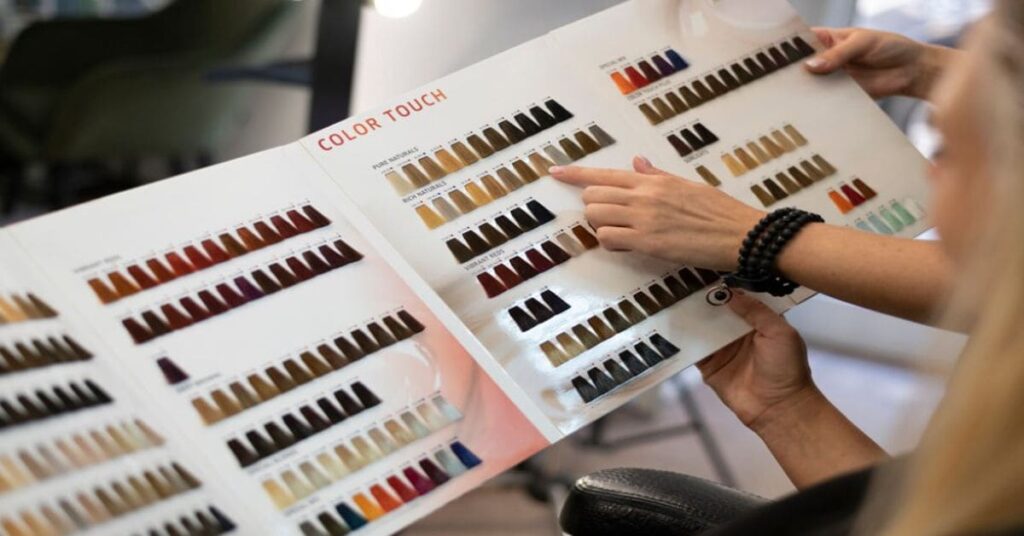
Semi-permanent and demi-permanent hair dyes are popular options for those looking to change their hair color without the commitment or potential damage associated with permanent dyes.
Semi-Permanent Hair Dye:
- Definition: Semi-permanent hair dyes contain smaller color molecules that only partially penetrate the hair shaft. These dyes typically last for about 6-12 washes, depending on factors such as hair porosity and the shade used.
- How They Work: Semi-permanent dyes coat the outer layer of the hair shaft rather than altering its internal structure. They usually don’t contain ammonia or peroxide, making them less damaging and safer for frequent use.
Benefits:
- Gentle on the Hair: Because they don’t contain harsh chemicals like ammonia or peroxide, semi-permanent dyes are less damaging and can help maintain the hair’s overall health and integrity.
- Fading: Semi-permanent dyes gradually fade with each wash, resulting in a more natural-looking transition back to the original hair color.
- Temporary: They provide temporary color changes, allowing for experimentation with different shades without a long-term commitment.
- Considerations: Semi-permanent dyes may not be as effective for covering gray hair or achieving significant color changes, especially on darker hair shades.
Demi-Permanent Hair Dye:
- Definition: Demi-permanent hair dyes are a step up in terms of longevity compared to semi-permanent dyes. They contain slightly larger color molecules that penetrate the hair shaft more deeply, resulting in a longer-lasting color.
- How They Work: Demi-permanent dyes typically contain low levels of peroxide, which allows the color to partially penetrate the hair cortex. They don’t contain ammonia or have a very low ammonia content, making them gentler than permanent dyes.
Benefits:
- Longer Lasting: Demi-permanent dyes generally last longer than semi-permanent dyes, with color retention lasting up to 20-28 washes.
- Color Enhancement: They can enhance the hair’s natural color, cover grays more effectively, or darken the hair tone without significantly lightening it.
- Low Commitment: While offering longer-lasting results than semi-permanent dyes, demi-permanent dyes still provide the flexibility to change or adjust hair color relatively easily.
- Considerations: Demi-permanent dyes may not be suitable for achieving drastic color changes or lightening the hair by more than a couple of shades.
Semi-permanent and demi-permanent hair dyes are excellent options for individuals looking for temporary or low-commitment color changes with minimal damage to the hair. Choosing between the two depends on factors such as desired longevity, coverage needs, and color goals. It’s essential to follow the manufacturer’s instructions and perform a patch test before using any hair dye to ensure safety and the desired results.
Henna
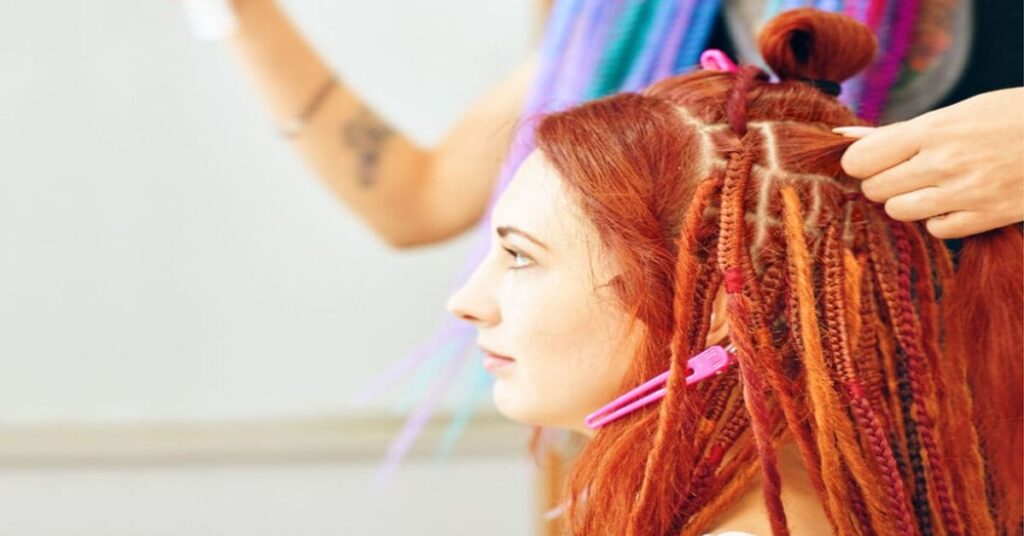
Henna is a natural dye derived from the leaves of the Lawsonia inermis plant, also known as the henna tree. It has been used for centuries in various cultures around the world for body art, hair coloring, and traditional rituals. Here are some more details about henna:
Natural and Plant-Based:
- Henna dye is made from the dried and powdered leaves of the henna plant. It contains lawsone, a reddish-orange pigment that binds to the proteins in the keratin of the hair, resulting in a permanent or semi-permanent color change, depending on the formulation and application method.
Color Range:
- Henna typically produces shades of red, ranging from subtle coppery tones to deeper burgundy hues. However, the final color outcome can vary depending on factors such as the natural color of the hair, the quality of the henna powder, and the length of time the henna is left on the hair.
Natural conditioning properties:
- In addition to coloring the hair, henna is known for its conditioning and strengthening properties. It can help improve the texture of the hair, making it softer, shinier, and more resilient. Many people use henna not only for its color but also as a natural hair treatment.
Permanent or Semi-Permanent:
- The permanence of henna hair color depends on several factors, including the original color of the hair, the quality of the henna, and how it’s applied. Generally, henna color is considered permanent because it penetrates the hair shaft and binds to the keratin proteins. However, some fading may occur over time, especially with repeated washing and exposure to sunlight.
Application Process:
- Applying henna to the hair requires mixing the henna powder with a liquid such as water, lemon juice, or tea to form a paste. The paste is then applied to clean, dry hair, section by section, and left on for several hours to allow the dye to develop. Some people choose to wrap their hair in plastic wrap or a shower cap to keep the henna warm and enhance color uptake. After the desired processing time, the henna is rinsed out, and the hair is typically conditioned.
Safety and Sensitivity:
- While henna is generally considered safe for most people, it’s essential to use high-quality, pure henna powder without additives or chemical dyes, as some products labeled as “henna” may contain other ingredients that could cause allergic reactions or damage the hair. Additionally, performing a patch test before applying henna to the entire head is recommended, especially for individuals with sensitive skin or allergies.
Henna is a popular choice for those seeking a natural, plant-based alternative to chemical hair dyes. It offers not only vibrant color but also conditioning benefits, making it a versatile option for hair coloring and treatment.
Professional Application
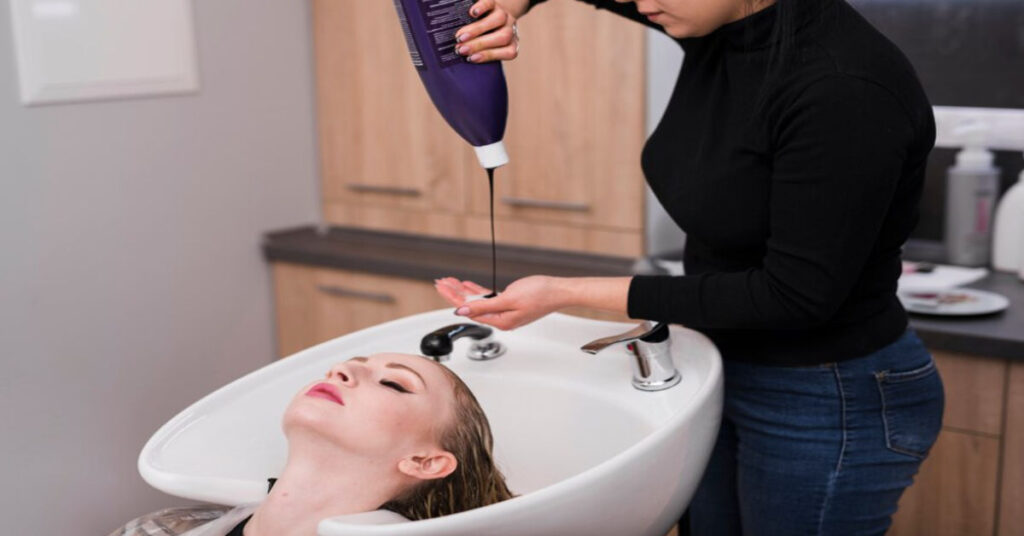
Professional application of hair color involves having the process performed by a trained and experienced hairstylist or colorist in a salon setting. Here are some more details about the professional application of hair color:
Consultation:
- Before the color application process begins, a consultation is typically conducted between the client and the stylist. During this consultation, the stylist will assess the client’s hair type, condition, and color goals. They will discuss various factors such as desired hair color, hair health, previous color treatments, and maintenance requirements.
Customized Formulation:
- Based on the client’s desired color outcome and the condition of their hair, the stylist will formulate a custom hair color mixture. This mixture may include a combination of permanent, semi-permanent, or demi-permanent colors, along with developers and other additives as needed to achieve the desired result.
Application Technique:
- The stylist will apply the hair color mixture to the client’s hair using professional techniques to ensure even coverage and precise results. This may involve techniques such as root touch-ups, full head color application, balayage, highlights, or lowlights, depending on the client’s preferences and desired look.
- Timing and Processing: The hair color is left on the hair for a specific amount of time to allow the color molecules to penetrate the hair shaft and develop fully. The processing time may vary depending on factors such as hair texture, porosity, and the desired level of color intensity.
- Monitoring and Adjustment: Throughout the color application process, the stylist will monitor the hair’s condition and the development of the color. They may make adjustments to the processing time or color formula as needed to ensure optimal results and minimize damage to the hair.
- Rinsing and Conditioning: Once the color has been processed, the stylist will rinse the hair thoroughly to remove the excess color product. A conditioning treatment may be applied to nourish and hydrate the hair, restoring moisture and enhancing shine.
- Styling and Aftercare: After the color application process is complete, the stylist may provide additional styling services such as cutting, blow-drying, or styling the hair to enhance the overall look. They will also offer guidance on proper aftercare and maintenance to help preserve the color and keep the hair healthy.
- Follow-Up: Depending on the client’s hair color goals and maintenance needs, follow-up appointments may be scheduled for touch-ups, color adjustments, or additional treatments as necessary.
Professional application of hair color offers several advantages, including personalized consultation, customized color formulation, precise application techniques, and expert guidance on aftercare. It can help ensure beautiful, long-lasting results while minimizing the risk of damage to the hair.
Regular Deep Conditioning
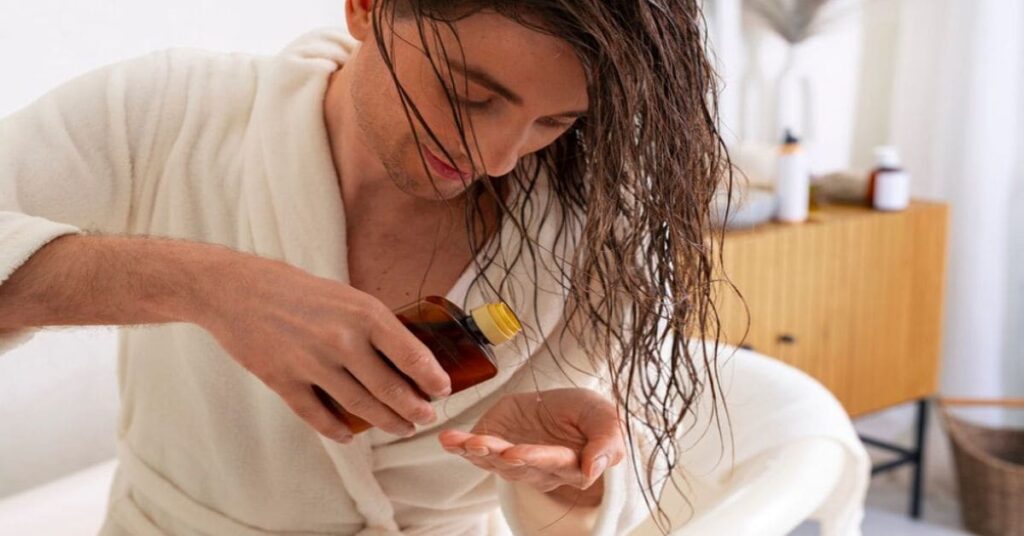
Regular deep conditioning is an essential aspect of hair care, particularly for individuals who color their hair or have dry, damaged, or chemically treated hair. Here are some more details about the importance and benefits of regular deep conditioning:
- Hydration and Moisture: Deep conditioning treatments provide intense hydration and moisture to the hair strands, helping to restore moisture balance, softness, and elasticity. This is especially crucial for dry or damaged hair, as it helps prevent breakage and split ends.
- Repair and Strengthen: Deep conditioning treatments often contain ingredients such as proteins, vitamins, and natural oils that help repair and strengthen the hair shaft. These ingredients can penetrate the hair cuticle, nourish the hair from within, and improve its overall health and resilience.
- Color Protection: For individuals who color their hair, regular deep conditioning can help protect and prolong the vibrancy of the hair color. Deep conditioning treatments create a protective barrier around the hair shaft, sealing in moisture and preventing color fade caused by environmental factors such as sun exposure and heat styling.
- Detangling and Manageability: Deep conditioning treatments help to smooth the hair cuticle, making the hair more manageable and easier to detangle. This can reduce friction and breakage during styling, resulting in smoother, shinier hair with fewer knots and tangles.
- Heat Damage Prevention: Heat styling tools such as flat irons, curling irons, and blow dryers can cause damage to the hair, leading to dryness, breakage, and split ends. Regular deep conditioning helps protect the hair from heat damage by strengthening the hair shaft and providing a barrier against heat styling.
- Scalp Health: Deep conditioning treatments can also benefit the scalp by nourishing the hair follicles, promoting healthy hair growth, and soothing dry or irritated scalp conditions. Some deep conditioning formulas contain ingredients that help balance the scalp’s natural oils and alleviate scalp issues such as dandruff or itchiness.
- Application Frequency: The frequency of deep conditioning treatments can vary depending on individual hair type, condition, and needs. Generally, it’s recommended to deep condition the hair at least once a week for optimal results, although individuals with very dry or damaged hair may benefit from more frequent treatments.
- Application Technique: To deep condition the hair effectively, apply a generous amount of deep conditioning treatment to clean, damp hair, focusing on the mid-lengths and ends. Comb the product through the hair with a wide-tooth comb to ensure even distribution, then leave it on for the recommended time (usually 5-30 minutes, depending on the product). Rinse thoroughly with lukewarm water and style as usual.
Regular deep conditioning is an essential part of a healthy hair care routine, helping to nourish, strengthen, and protect the hair from damage while promoting overall hair health and vitality.

